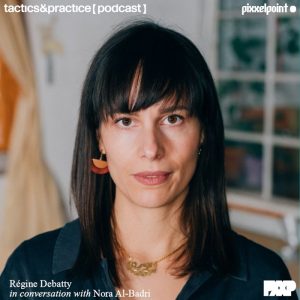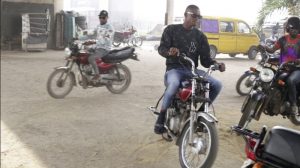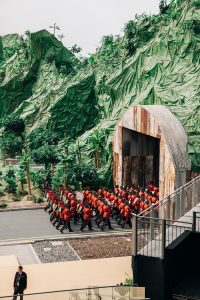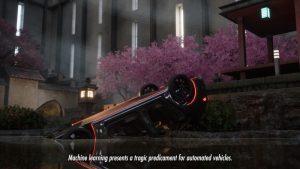I discovered the work of Iraqi-Finnish artist Adel Abidin in 2007 at the Nordic pavilion of the Venice Biennale. The artist had filled a space with tv commercials and leaflets advertising exciting holidays in Baghdad. An Abidin Travels video informed tourists about all the tricks and tips to enjoy their stay as much as possible: museums are closed, but that doesn’t really matter as most of their content was looted; avoid sidewalks as they hide mines; never leave without candles or a torch with extra batteries, for the times when electricity is unavailable; stay at a hotel of the lowest possible quality (the posh ones are targeted by Fundamentalist Muslims, or the National Forces), etc.
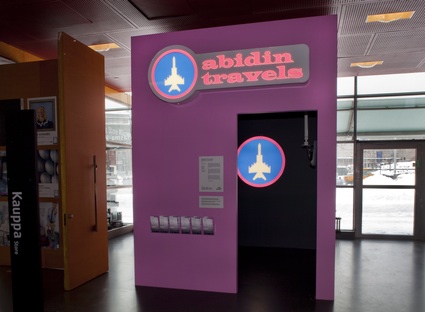 Abidin travels. Photo: Finnish National Gallery. Central Art Archives. Petri Virtanen
Abidin travels. Photo: Finnish National Gallery. Central Art Archives. Petri Virtanen
If the adventure tempts you, a computer was at hand in the pavilion to book your fly (you can also do it online.) In a darker room, another video monitor was showing real images of everyday life in Iraq.
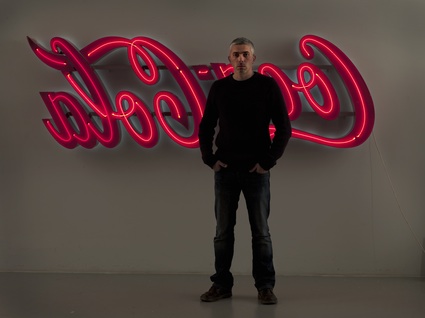 To Mohammed! To Mecca!, 2009. Picture of the artist and his work. Photo: Finnish National Gallery, Central Art Archives, Petri Virtanen
To Mohammed! To Mecca!, 2009. Picture of the artist and his work. Photo: Finnish National Gallery, Central Art Archives, Petri Virtanen
If you happen to be in Helsinki, don’t miss the solo exhibition of Abidin at Kiasma. Abidin Travels welcomes you by the entrance of the museum but it’s the videos screened upstairs that got all my admiration. Children playing Hopscotch, musicians using flat breads as percussion instruments, an inverted Coca-Cola neon sign, etc. Abidin uses mundane objects and gestures to explore issues such as exclusion, gender roles and sexuality, religion, violence and power.
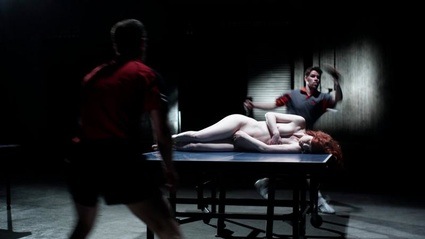 Adel Abidin, Ping Pong, 2009
Adel Abidin, Ping Pong, 2009
The most stunning video is probably Ping Pong. Two men in a dark room engrossed in a fierce match. Instead of a net, the body of a beautiful woman that bears the marks of the ball each time it hit her skin. She is silent but winces at every blow. Neither the player not the faceless referee seem to care.
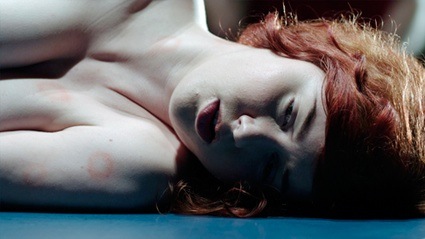
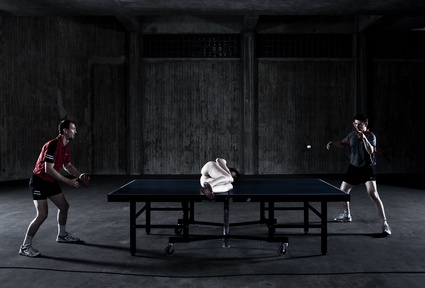 Adel Abidin, Ping Pong, 2009
Adel Abidin, Ping Pong, 2009
It is a struggle for power where the outsider is the victim. But who are those who play for power – and why is the victim a naked woman? The artist wants to leave the interpretation of his work to the viewer.
There’s an extract of the video on vimeo (and more vids this way please.)
Also on view at Kiasma: Rentyhorn, making the legacy of colonialism visible, part of the exhibition It’s a Set-Up.
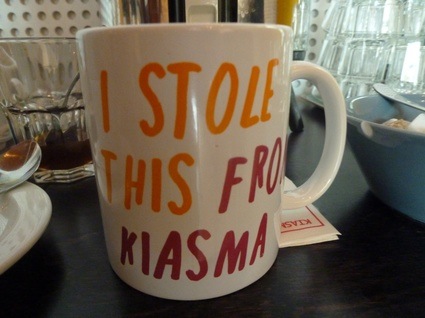 Adel Abidin opens until April 25, 2010 at Kiasma, Helsinki.
Adel Abidin opens until April 25, 2010 at Kiasma, Helsinki.
Previously: Adel Abidin at the Nordic pavilion of the Venice Biennale.


